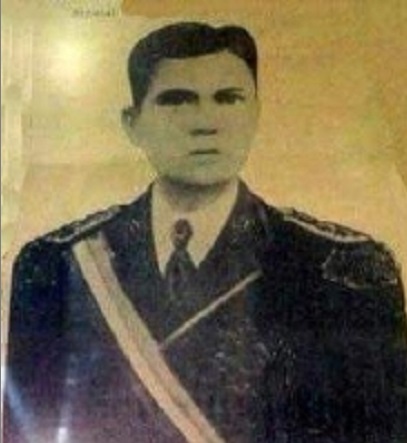Cebuanos launch revolt against Spanish rule

An old photo of Pantaleon Villegas also known as Leon Kilat featured at the Facebook page of Karaang Sugbo (Old Cebu)
Cebuanos played a crucial role in the country’s quest for independence during the Spanish period as evidenced by the historic 1989 Battle of Tres de Abril.
Lawyer Harve Abella, a local history enthusiast, recounted to Cebu Daily News that more than 5,000 Cebuano revolutionaries took part in the first major battle for independence from Spanish rule on April 3, 1898.
On that date, Cebuano revolutionaries fought and took control of Cebu towns of Argao, Barili, Carcar, Opon and Cordova.
The battle was also called “Bloody Palm Sunday” and it was led by Pantaleon Villegas, known as Leon Kilat. He said Kilat was commissioned by Emilio Aguinaldo to lead the planned revolt in Cebu.
Torture
Abella said Kilat, a native of Bacong, Negros Oriental was in Cebu during that time and worked for a pharmacy called Botica Antigua that sold and provided medicine to the revolutionaries.
“Supposedly the revolt was first planned on April 8, 1898 which was ‘Good Friday.’ On that day, the Spanish soldiers stood down because of the solemn procession,” Abella said.
Kilat and other Cebuano revolutionaries agreed to launch the revolt during a meeting inside a sugarcane mill owned by Jacinto Pacana in Labangon on March 11, 1898.
“But something unexpected happened on March 22 when Juanario Gabrillo from San Nicolas was brought to Fort San Pedro and investigated by Governor General Adolfo Montero,” Abella said.
Under torture, Gabrillo disclosed the names of revolutionaries like Florencio Gonzales, Gregorio Abellana, Candido Padilla, Gavino Padilla, Frisco Abriyo, Lucio Herrea, Teofisto Cavan and Andres Abellana.
On April 2, Kilat still had no idea that Padilla and Gonzales had been killed as he and the others met in the house of lawyer Isidro Guivelondo and planned to rescue the captured revolutionaries the following day, Abella said.
On that same day, the Spanish Guardia Civil were killed by Cebuano revolutionaries like the Aliño brothers, namely, Potenciano, Felix and Florencio.
“As the planned revolution was coming, a certain woman named “Potenciana” confessed to a priest the planned revolution by the Cebuano revolutionaries,” Abella said.
In the early morning of April 3, Abriyo was arrested and hogtied. Gavino Padilla informed Kilat of Abriyo’s capture while he was in the meeting at Guivelondo’s house.
In order not to compromise their planned revolt, Kilat launched the revolt on April 3.
At 3 p.m. on that day, Kilat and other revolutionaries met at Rosalia Street (Carlock Street) and Mindanao Street (now B. Aranas) while the party led by Luis Flores assembled at Guadalupe Street (V. Rama Avenue).
Montero then sent two columns of his soldiers and met between V. Rama and Tres de Abril Street where the bloody battle erupted.
“The Cebuanos won despite firearms used by the Spaniards. They (Cebuano revolutionaries) looted some stores and warehouse for installations of firearms and even money,” Abella said.
Montero and his troops retreated to their stronghold in Fort San Pedro.
Abella said some structures were not taken like San Agustin Basilica (Sto. Niño Basilica) that had two to five-meter thick walls.
No records
Reinforcements for the Spaniards arrived on the Spanish ship Don Juan de Austria which docked in Cebu on April 7.
The Cebuano revolutionaries fled to Carcar town but Kilat didn’t know that there were Spanish supporters in the area.
On April 8, Kilat was killed in his sleep while his compatriots were arrested.
Abella said the names of the streets in Cebu City are mostly named in honor of the Cebuano revolutionaries who fought against the Spaniards.
“There were no records on where they are buried. But most of the Cebuano revolutionaries were employees of multinational companies which operated in San Nicolas,” Abella said.
Disclaimer: The comments uploaded on this site do not necessarily represent or reflect the views of management and owner of Cebudailynews. We reserve the right to exclude comments that we deem to be inconsistent with our editorial standards.
